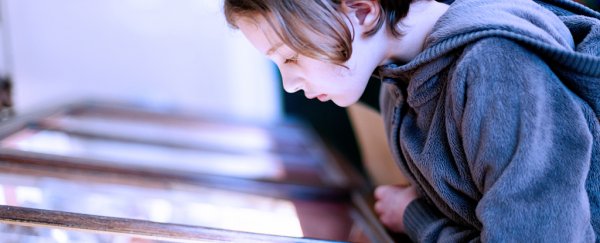Community science – also known as citizen science – has enormous appeal for researchers looking to collect larger datasets and engage the public in their work. But are the data collected in this way any good?
Enabled by technology, community science allows researchers to harness the power of public interest, using their voluntary contributions to data collection. This way, scientists can collect and analyze more information quicker than they might be able to otherwise, and potentially save on research costs, too.
But a key tenet of scientific data collection is accuracy and consistency. What community science offers to traditional research methods is only as good as the quality of data its participants produce. In a new study, researchers put that quality to the test.
Herbarium collections in museums worldwide – of which there are over 3,000, with an estimated 350 million specimens – are undergoing digitization, allowing the public to 'get closer' to specimens, without affecting their preservation. But despite digitization, researchers say, museum specimens are still so-far underused.
Study author and botanist Matt von Konrat, head of plant collections at the Chicago Field Museum, says community science could change this.
"Crowd-sourced data collection projects… have the potential to greatly accelerate biodiversity discovery and documentation from digital images of scientific specimens," he notes.
Public interest can speed up the process of manual tasks, like taking measurements of herbarium specimens. For a museum with thousands of specimens, using the foot traffic of keen visitors makes a lot of sense.
To test this approach, researchers used data from a touchscreen kiosk in a museum exhibition. The kiosk offered participants an animated tutorial on how to measure the lobules (leaf-like structures) of liverworts, a type of plant related to moss.
After viewing the tutorial, participants were shown a randomly-selected image of a liverwort specimen from the museum's collection, and asked to make their own measurement of its lobules.
Patrons were instructed to create two intersecting lines across each lobule, each representing width and length. They were asked to create lines that intersected at right angles, and record a measurement for each line in pixels. The images were scaled so that 1 pixel was equal to 1.05 microns, because liverworts – one of the earliest known land plants – are quite tiny.
The researchers also tried to capture data on the participants' ages, roughly summarized as children (age 10 and under), teens (age 10 to 18), and adults (18+).
To test how 'good' each community science data entry was, the researchers compared them to that of an expert using the same methods, to find if there was a statistically significant difference. The results exceeded their expectations.
The researchers predicted that about 50 percent of measurements would make it through the data cleaning process, and that older age groups would be able to provide much better data than children.
"We didn't know if there would be kids drawing pictures on the touchscreen instead of measuring leaves, or if they'd be able to follow the tutorial as well as the adults did," says lead researcher, mathematician Melanie Pivarski from Roosevelt University.
But after cleaning and analysing the community scientists' data (which included nearly 6,700 lobules measured), the study found that 60 percent of all entries were on par with the experts' measurements.
"All age groups from young children, families, youth, and adults were able to generate high-quality taxonomic data sets, making observations and preparing measurements, and at the same time empowering community scientists through authentic contributions to science," von Konrat says.
Pivarski said they were especially amazed at how well children completed the task.
In 2017, the kiosk featured as part of Specimens: Unlocking the Secrets of Life at the Field Museum. In 2018, it was included in the Grainger Science Hub, Field Museum member nights, and other events.
In the Specimens exhibit, 41 percent of data entered by children (who were not being helped by older friends or relatives) were statistically similar enough to the expert's measurement to be used for research.
At the Science Hub, 50 percent of data by the youngest age group – kids under 10 – made the cut.
"This means that children did a remarkable job following instructions and taking the .. measurements seriously," the researchers remarked in their paper.
While other studies have found that budding citizen scientists can overestimate species diversity, the new findings do give merit to community science projects, suggesting they can indeed be used to both engage the public in scientific research, and gather some good data as well.
This paper was published in Research Ideas and Outcomes.
